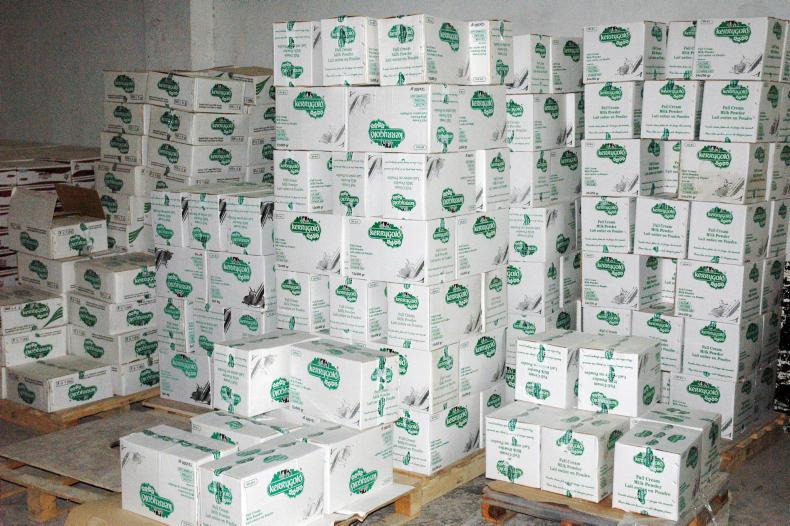The EU Milk Market Observatory recently released results of the various volumes of dairy product countries imported or exported for the first three months of 2017 compared with 2016. As Ireland is a net exporter of dairy product, the big importing countries are always under scrutiny from Irish processors and traders. So what have been the big changes in importers for the first two to three months of 2017 compared with 2016?
China top of the lot
China tops the importing list for the volume of butter, whole milk powder (WMP), skim milk powder (SMP) and whey. It’s not the top for cheese and instead Japan tops the list of countries importing the most cheese.
Russian butter imports up
From a global perspective, Russia has imported more butter and has gone from 14.500t to 17,000t, which is a lift of 18% year on year. However, none of that was from the EU as the Russian ban on EU product is still in place. However, the US imported 6,800t and 53% of it was of EU origin.
Chinese the whole milk powder king
China is by far the largest importer of WMP and it lifted WMP imports by 4% to import 162,000t, none of which was of EU origin, interestingly.
The other big WMP news is that Algeria has gone from importing 35,000t to over 60,000t over the same period, moving it into second position behind China, while 10% of the powder gone to Algeria is of EU origin.
Mexico closing in on China for SMP imports
In terms of SMP, China again is the big importer and it imported over 53,000t, of which 18% was of EU origin. Mexico has moved into second place in terms of volume of SMP imported and it has gone from importing over 40,000t to over 47,000t, which is a rise of 16% but only 2% of the Mexican SMP was of EU origin.
China whey ahead
Again, in terms of whey, China is by far the biggest importer of whey and volumes imported into China for the first three months of 2017 have gone from over 68,000t to almost 75,000t (+9%), of which 36% is of EU origin.
The next best market for whey is Russia (zero EU product), followed by Thailand, which imported almost 9,500t, of which 61% was of EU origin.






 This is a subscriber-only article
This is a subscriber-only article











SHARING OPTIONS: